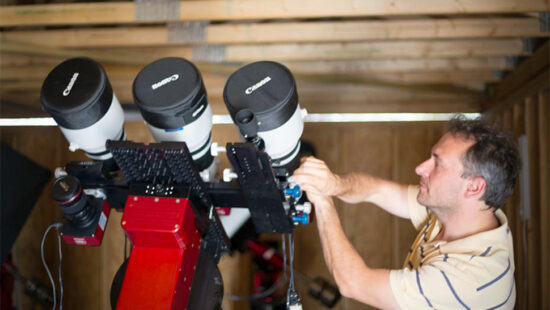Image Credit: Ethan Tweedie/W. M. Keck Observatory via AP
As of 2018, astronomers at Northwestern have access to some of the largest ground-based observational facilities in the world, situated in Hawaii and Arizona. Astronomy researchers can apply for nights through the internal time allocation process.
Northwestern astronomers have access to a pair of twin 10-meter telescopes atop Mauna Kea, Hawaii: the Keck Observatory. The combination of the large 10-meter mirrors and exquisite observing site makes Keck an unparalleled facility prior to the operations of the Extremely Large Telescopes.
Situated on the summit of Mount Hopkins in Arizona, Northwestern astronomers can take observations with the 6.5-meter MMT Observatory. MMT is one of the most productive facilities in the Northern Hemisphere and one of a small number of telescopes of its size around the world.
As of 2024, CIERA members also have access to a small pool of Magellan time. Located at the Las Campanas Observatory in Chile, the twin Magellan telescopes are each 6.5-meter and have a large suite of optical and near-infrared instruments.
As a founding member of the GMT consortium, CIERA astronomers at Northwestern will have access to the Giant Magellan Telescope. The telescope will be the largest Gregorian optical infrared telescope ever engineered. Its unique design is the most optically efficient of all 30-meter-class telescopes, providing the widest field of view of the Universe with seven of the world’s largest mirrors.
Image from NASA.gov (Credit: Ethan Tweedie Photography/W. M. Keck Observatory)






